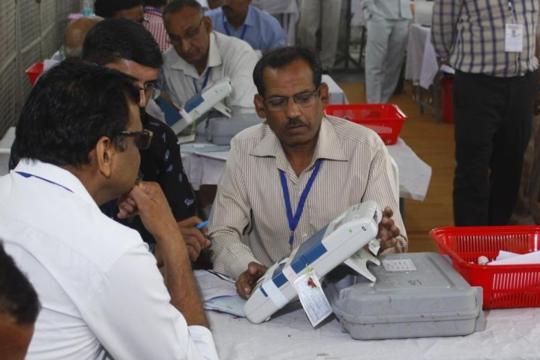
The report (PDF), published on Thursday, said Taliban attacks on Afghan targets surged from 6,700 in the three months up to the Doha agreement to 13,242 in the September-November 2020 period.
Attacks have stayed above 10,000 in each subsequent three-month period, according to the report by the US Special Inspector General for Afghanistan Reconstruction (SIGAR).
While the rise in attacks has long been clear, data was previously available to demonstrate how intense the rebels’ offensive had become.
The US agreed to withdraw all troops from Afghanistan with the expectation that the Taliban would negotiate a peace deal with the Kabul government.
Since then, the Taliban-government talks have stalled but the US has steadily pulled out troops to a level of only several hundred now, with an August 31 deadline for full withdrawal.
The SIGAR report makes clear that the Doha agreement, instead of propelling Taliban-Kabul talks, unleashed a Taliban offensive that caught government forces unprepared and increased the number of civilian deaths.
Over the period of January to March of 2020, there were 510 civilian deaths and 799 injuries, the report said, quoting data from the US-NATO joint force in Afghanistan.
After that the numbers surged, hitting a high of 1,058 deaths and 1,959 injured in the third quarter of 2020 and continuing at high levels.
The latest data, for April and May this year, showed 705 civilian deaths and 1,330 casualties, the SIGAR report said.
“The overall trend is clearly unfavourable to the Afghan government, which could face an existential crisis if it isn’t addressed and reversed,” said the inspector general, John Sopko.
He said the report offered a sobering picture that contrasted with “the pervasiveness of overoptimism” that characterised US-led efforts to rebuild and strengthen Afghanistan and the cost of hundreds of billions of dollars to the US government.
“The news coming out of Afghanistan this quarter has been bleak,” the report said.
Afghan air force overstretched
Faced by a new Taliban offensive, the report said, the Afghan government security force “appeared surprised and unready, and is now on its backfoot”.
“Particularly concerning was the speed and ease with which the Taliban seemingly wrested control of districts in Afghanistan’s northern provinces, once a bastion of anti-Taliban sentiment.”
The Afghan air force, considered to be one of the few remaining advantages the government in Kabul has in the fight against the Taliban, is increasingly overstretched, said the watchdog.
All Afghan aircraft were operating at 25 percent over their recommended scheduled maintenance intervals, with five out of seven aircraft experiencing decreases in readiness in June alone, says the SIGAR report.
The agency said that, for example, the fleet of AC-208 light attack combat aircraft had maintained 93-per-cent readiness between April and May, but that the indicator decreased to 63 percent in June.
SIGAR added that all Afghan aircraft and crew were “overtasked” due to increased requests for air support, intelligence, surveillance, reconnaissance, and resupply missions.
The decrease in readiness coincides with an increase in offensives by the Taliban and a near-complete US exit from the war-torn country.
Follow this link to join our WhatsApp group: Join Now
Be Part of Quality Journalism |
Quality journalism takes a lot of time, money and hard work to produce and despite all the hardships we still do it. Our reporters and editors are working overtime in Kashmir and beyond to cover what you care about, break big stories, and expose injustices that can change lives. Today more people are reading Kashmir Observer than ever, but only a handful are paying while advertising revenues are falling fast. |
| ACT NOW |
| MONTHLY | Rs 100 | |
| YEARLY | Rs 1000 | |
| LIFETIME | Rs 10000 | |









